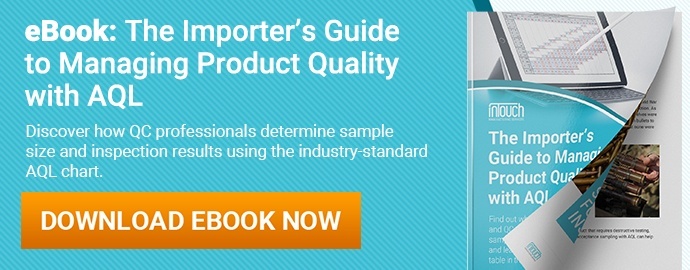Your brand's reputation is heavily dependent on your quality levels. If you sell defective products, you are likely to lose customers, incur losses, and even deal with the ensuing lawsuits.
As such, you must maintain high levels of quality throughout production. While there are many ways of testing whether a batch of products has reached the quality level, setting an AQL standard (Acceptable Quality Level) is among the best ways to do so. As long as you work with reputable quality control professionals, maintaining high quality levels will be easy.
Here is what you need to know about AQL standards and how to use them to improve your production quality:
What Are AQL Standards, And How Are They Used?
The Acceptable Quality Level (AQL) can be defined as the worst tolerable quality level of a product. It is typically expressed as a ratio or percentage of the number of defects within a specific quantity of products.
Ideally, an inspector will use random sampling to pick a specific number of items to test from a batch. If the number of defective items falls below the worst tolerable quality level, then the product has met the acceptable quality level (AQL). If a product doesn't meet the AQL standard, you will be required to assess your production parameters to identify the specific areas leading to the defects.
For instance, if the AQL for product inspections is set at 1%, no more than 1% of the total products are allowed to be defective. Out of 1000 products, only ten can be allowed to be defective. If 11 products are found to be defective, the entire batch will be scrapped.
AQL standards can vary from one industry to another. For instance, medical products tend to be limited to stringent quality standards since defects can pose health risks. AQL standards are divided into three categories, including:
1. Minor Defects
Minor defects tend to be subtle or insignificant issues and they might not even affect the functionality of the item in question. Some customers might not notice these defects in their products. Those that do might not return them or raise complaints.
Manufacturers set high tolerance levels for minor defects. However, if the number of minor defects exceeds the set AQL standard, the product will still be considered to have failed the inspection.
2. Major Defects
Major defects tend to depart from the buyer's product specifications. Since they can affect the functionality, appearance, and performance of the product, it is easy for customers to notice these defects. There is a high chance that they will raise a complaint, return the product, and/or seek a refund. In most cases, importers and manufacturers set the AQL standard for minor defects very low.
3. Critical Defects
These defects can either increase the chances of a product causing harm to the user or make the product unusable. They introduce a huge risk to the business as they can easily lead to liability issues, product recalls, and lawsuits. Most importers and customers exercise a zero-tolerance policy for these defects. Any product that has a critical defect will have failed the inspection.
High-quality levels should be non-negotiable, especially if you are doing business in a highly competitive industry. Your customers depend on you to deliver nothing short of quality products. If you need any help in AQL for product inspections, feel free to reach out to Asia Quality Focus.








